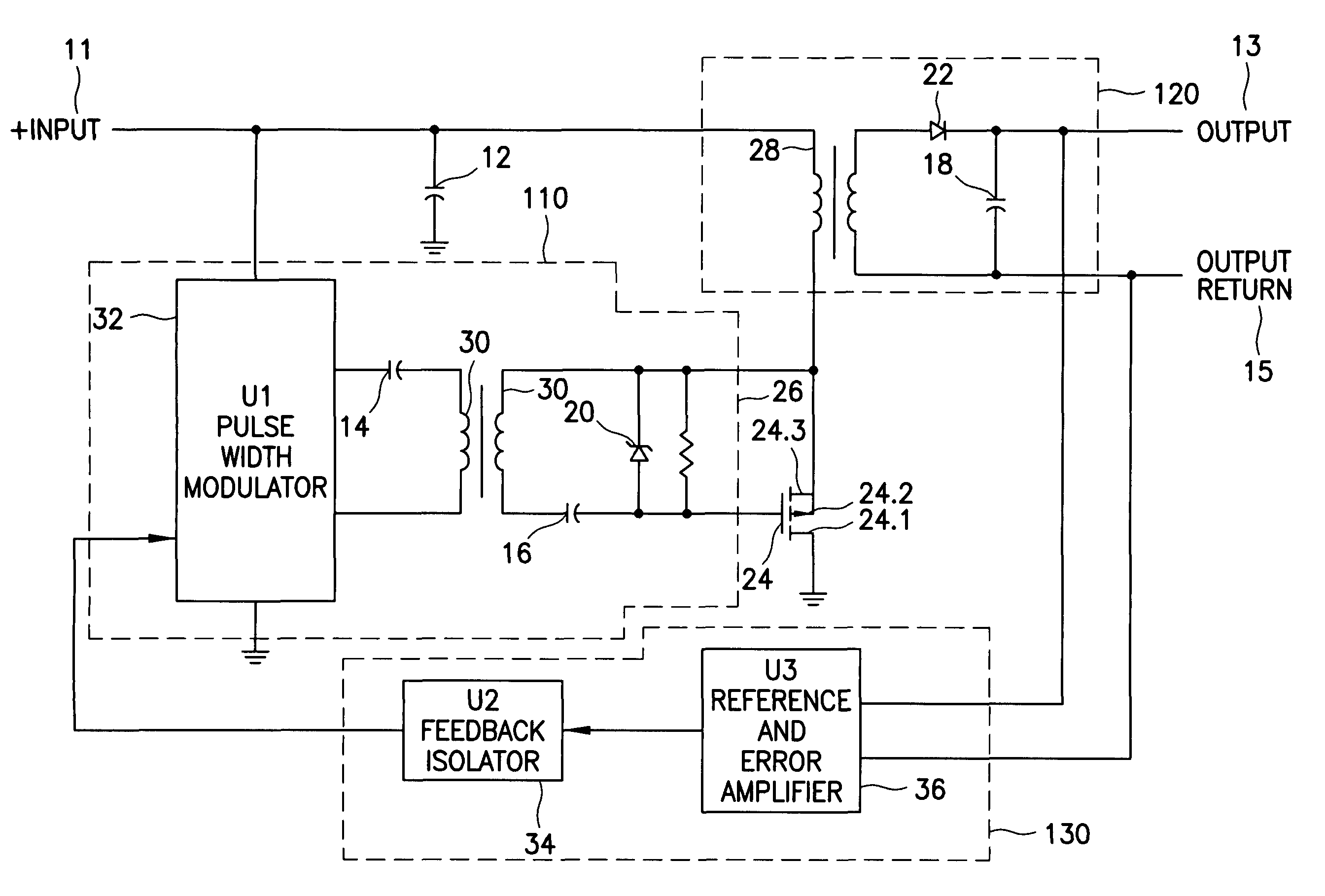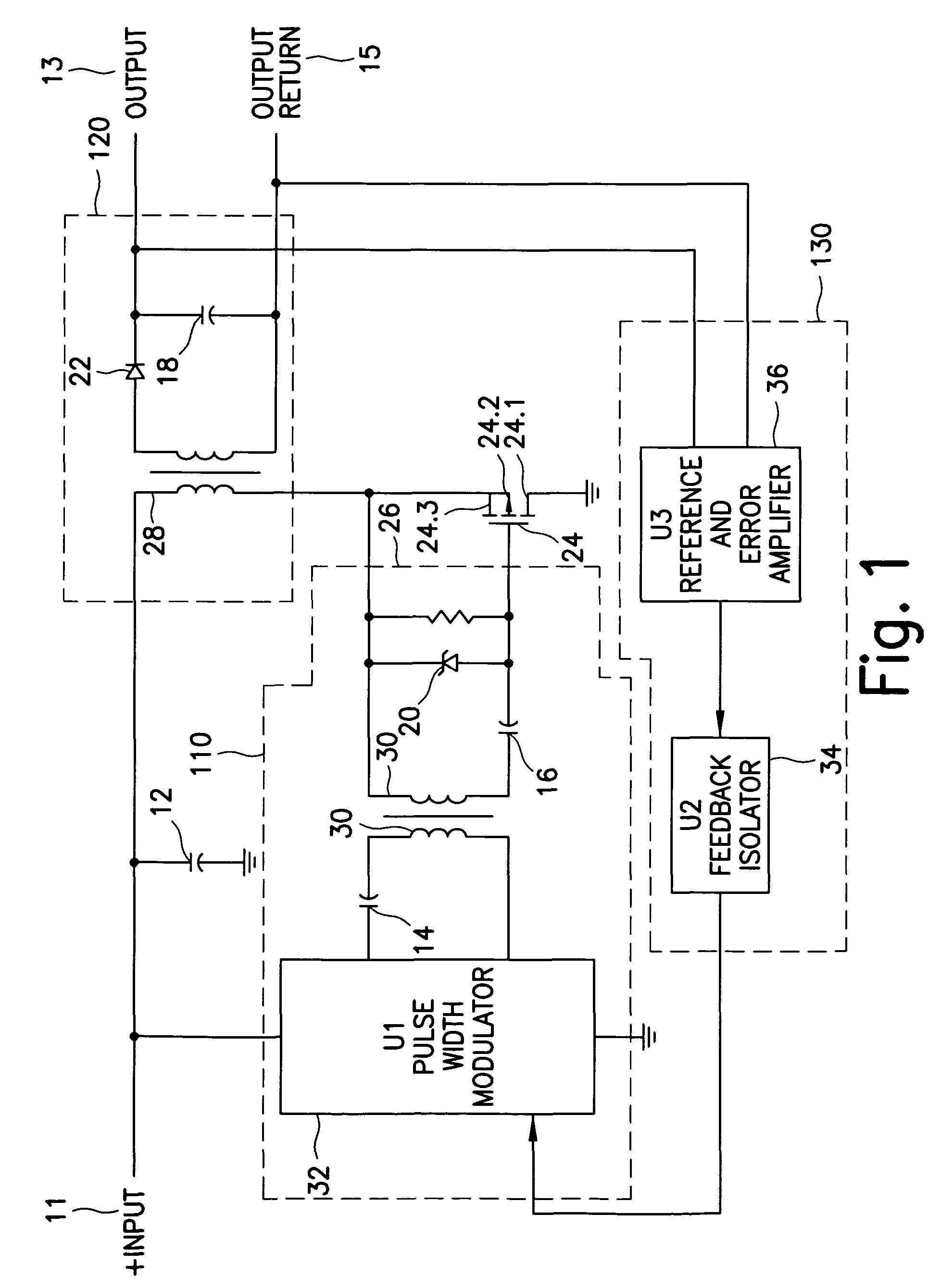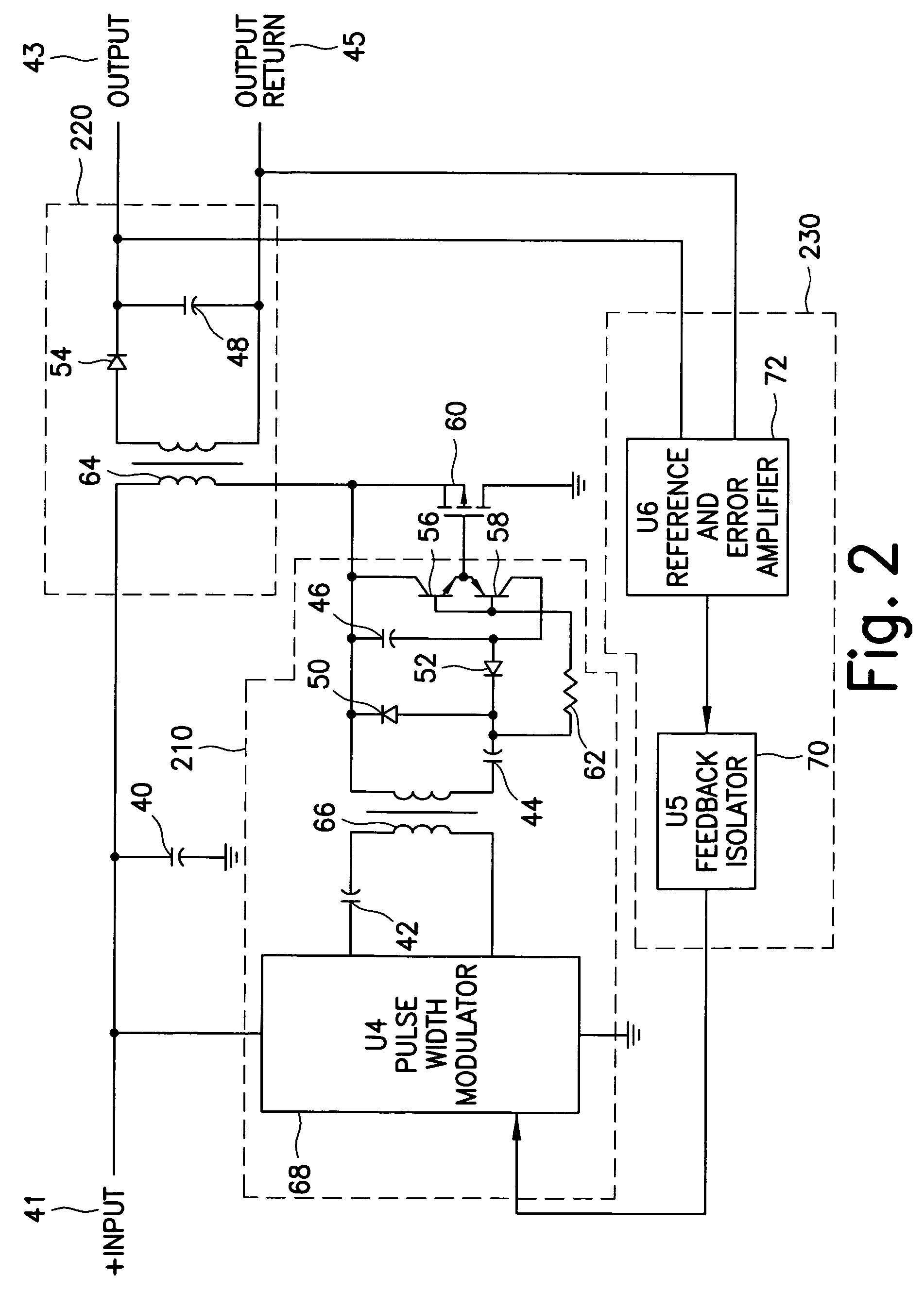Radiation tolerant electrical component with non-radiation hardened FET
a technology of radiation hardening and electrical components, applied in the direction of dc-dc conversion, power conversion systems, instruments, etc., can solve the problems of large variation in current from the source to the drain, uncontrollable fet, and designed radiation hardening n channel fet, etc., to maximize the magnitude of gate voltage signal and signal magnitude. , the effect of high magnitud
- Summary
- Abstract
- Description
- Claims
- Application Information
AI Technical Summary
Benefits of technology
Problems solved by technology
Method used
Image
Examples
Embodiment Construction
[0021]Field-effect transistors exist in two major classifications, the junction FET (JFET) and the metal-oxide-semiconductor FET (MOSFET). A MOSFET is a special type of FET that works by electronically varying the width of a channel along which charge carriers (electrons or holes) flow. Wider channels provide better conductivity. The charge carriers enter the channel at the source, and exit via the drain. The width of the channel is controlled by the voltage on an electrode called the gate, which is located physically between the source and the drain and is insulated from the channel by an extremely thin layer of metal oxide.
[0022]There are two ways in which a MOSFET can function. The first is known as depletion mode. When there is no voltage on the gate, the channel exhibits its maximum conductance. As the voltage on the gate increases (either positively or negatively, depending on whether the channel is made of P-type or N-type semiconductor material), the channel conductivity dec...
PUM
 Login to View More
Login to View More Abstract
Description
Claims
Application Information
 Login to View More
Login to View More - R&D
- Intellectual Property
- Life Sciences
- Materials
- Tech Scout
- Unparalleled Data Quality
- Higher Quality Content
- 60% Fewer Hallucinations
Browse by: Latest US Patents, China's latest patents, Technical Efficacy Thesaurus, Application Domain, Technology Topic, Popular Technical Reports.
© 2025 PatSnap. All rights reserved.Legal|Privacy policy|Modern Slavery Act Transparency Statement|Sitemap|About US| Contact US: help@patsnap.com



